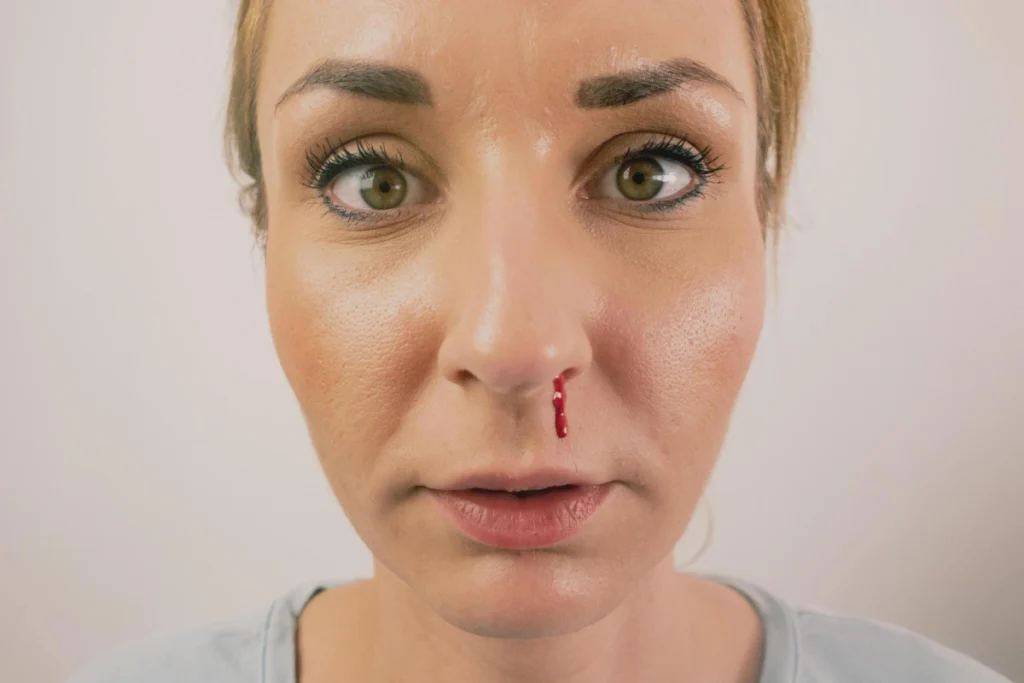The insidious effects of drugs manifest both internally and externally. While many consequences of substance abuse stem from psychological and cardiovascular impacts, cocaine also exacts profound physical damage in an unusual way – through the nose. Indeed, the cocaine nose serves as an example of how addiction can ravage not only the mind and body as a whole but also targeted areas like the nasal passages and sinuses.
This alarming condition encompasses medical issues ranging from bleeding and congestion to actual erosion of nasal tissue. Further exploration sheds light on both the anatomy of tissue damage and paths toward prevention and healing. But first, what exactly comprises cocaine nose?
Cocaine Nose: A Closer Examination
Cocaine nose manifests as a direct consequence of the repeated snorting of cocaine, a practice that subjects the nasal passages to severe damage. The condition encompasses a range of nasal and sinus issues, from inflammation and bleeding to severe symptoms such as a perforated septum.
The Anatomy of Nasal Destruction
The nasal passages are designed to withstand particle infiltration, but cocaine has devastating effects. The drug erodes mucous membranes and is meant to protect the nasal cavity. Unlike saline, which cleanses, cocaine actively breaks down tissues. It constricts blood vessels, choking off the oxygen supply. Over time, cell death and nutrient depletion allow damage to accumulate – inflammation, lesions, and infections.
Cocaine also numbs the nose, enabling more aggressive inhalation that hastens tissue breakdown. As blood vessels and membranes wither, trademark side effects emerge – congestion, nosebleeds, and smell loss. Years of abuse can even erode the septum completely, leaving a hole between nostrils. The process is gradual but expedited by prolonged cocaine use. Nasal tissues attempt to regenerate cells but eventually lose the repair battle against the constant corrosion of cocaine.
Navigating The Path to Healing
Acknowledging the issue is the first step towards recovery. Seeking professional guidance paves the way for a comprehensive treatment plan. Medical interventions often focus on addressing the immediate physical damages, while support therapies aim to tackle the psychological grip of addiction. The journey of recovery is as much about healing the physical scars as it is about re-establishing a sense of self and purpose beyond substance use.
The Imperative of Prevention and Conscious Awareness
Understanding and preventing cocaine nose goes beyond the individual; it requires a societal shift towards better mental health support and substance use education. Awareness campaigns play a crucial role in highlighting the risks associated with cocaine use. Creating a culture that encourages open discussions about addiction and supports those in recovery can significantly reduce the incidence of cocaine noses.
Conclusion
The distressing reality of cocaine nose serves as a microcosm of the greater substance abuse crisis plaguing society. While the behavioral factors leading to addiction may vary, the resulting health consequences reveal an undeniable truth – no one is immune to the scourge of drugs. However, just as the determination to recover comes from within, so too does the impetus for change ripple outwards through awareness and compassion. And therein lies a glimmer of hope. By tackling the stigmas surrounding addiction and building supportive networks, we inch collectively towards the light – one healing at a time. We must be the candle guiding the way for those trapped in darkness.

